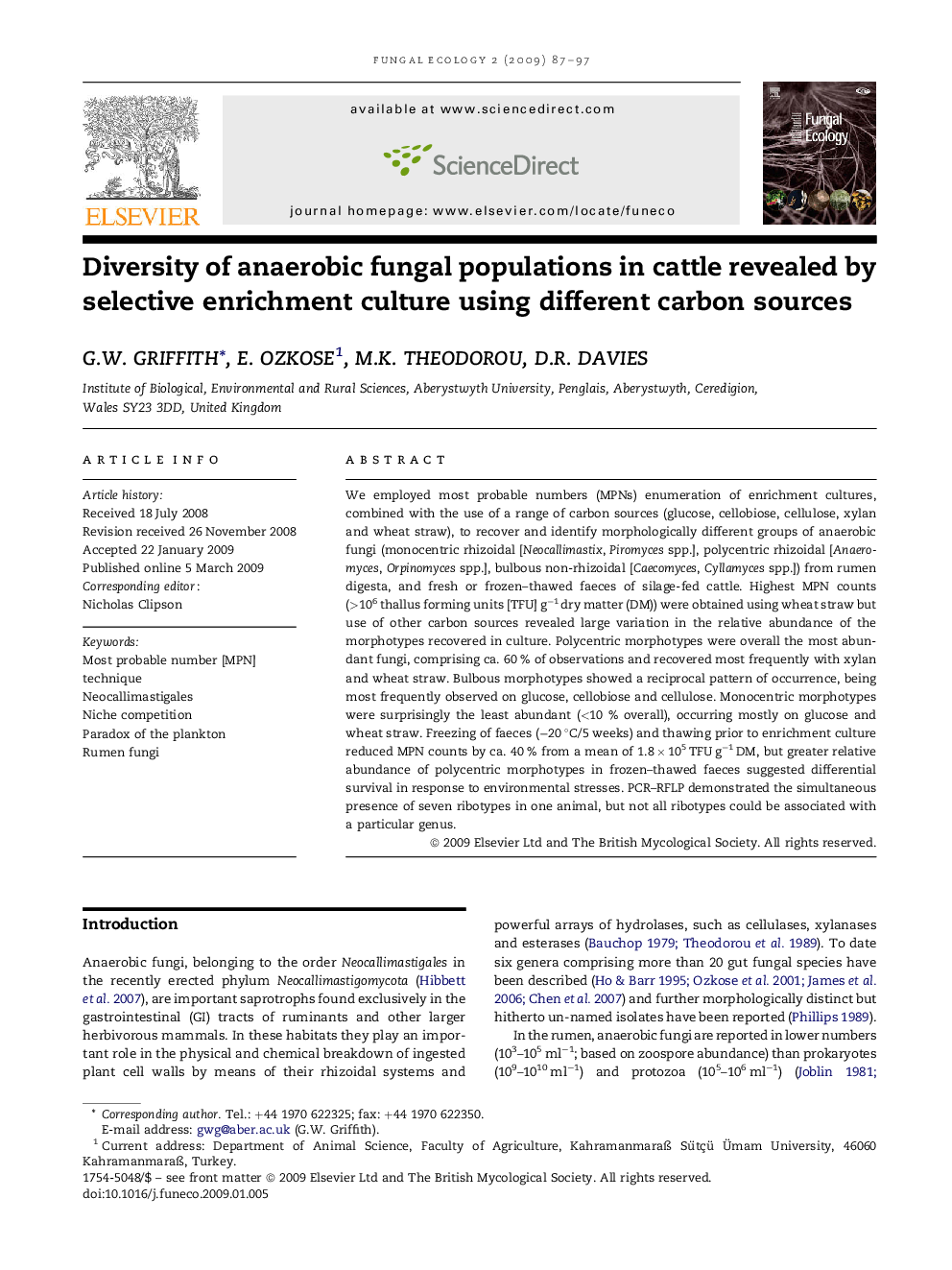| Article ID | Journal | Published Year | Pages | File Type |
|---|---|---|---|---|
| 2053731 | Fungal Ecology | 2009 | 11 Pages |
We employed most probable numbers (MPNs) enumeration of enrichment cultures, combined with the use of a range of carbon sources (glucose, cellobiose, cellulose, xylan and wheat straw), to recover and identify morphologically different groups of anaerobic fungi (monocentric rhizoidal [Neocallimastix, Piromyces spp.], polycentric rhizoidal [Anaeromyces, Orpinomyces spp.], bulbous non-rhizoidal [Caecomyces, Cyllamyces spp.]) from rumen digesta, and fresh or frozen–thawed faeces of silage-fed cattle. Highest MPN counts (>106 thallus forming units [TFU] g−1 dry matter (DM)) were obtained using wheat straw but use of other carbon sources revealed large variation in the relative abundance of the morphotypes recovered in culture. Polycentric morphotypes were overall the most abundant fungi, comprising ca. 60 % of observations and recovered most frequently with xylan and wheat straw. Bulbous morphotypes showed a reciprocal pattern of occurrence, being most frequently observed on glucose, cellobiose and cellulose. Monocentric morphotypes were surprisingly the least abundant (<10 % overall), occurring mostly on glucose and wheat straw. Freezing of faeces (−20 °C/5 weeks) and thawing prior to enrichment culture reduced MPN counts by ca. 40 % from a mean of 1.8 × 105 TFU g−1 DM, but greater relative abundance of polycentric morphotypes in frozen–thawed faeces suggested differential survival in response to environmental stresses. PCR–RFLP demonstrated the simultaneous presence of seven ribotypes in one animal, but not all ribotypes could be associated with a particular genus.
